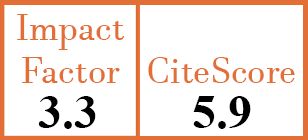Full Papers
Is long-term radiographic joint damage different between men and women? Prospective longitudinal data analysis of four early RA cohorts with greater than 15 years follow-up
J. Asikainen1, E. Nikiphorou2, K. Kaarela3, E. Lindqvist4, A. Häkkinen5, H. Kautiainen6, P. Hannonen7, T. Rannio8, T. Sokka9
- Jyväskylä Central Hospital, Jyväskylä, Finland.
- Jyväskylä Central Hospital, Jyväskylä, Finland.
- University of Tampere, Finland.
- Lund University, Skane University Hospital, Department of Rheumatology, Lund, Sweden.
- University of Jyväskylä, Finland.
- Unit of Primary Health Care, Helsinki University Central Hospital, and Department of General Practice, University of Helsinki; and Unit of Primary Health Care, Kuopio University Hospital, Finland.
- Jyväskylä Central Hospital, Jyväskylä, Finland.
- Jyväskylä Central Hospital, Jyväskylä, Finland.
- Jyväskylä Central Hospital; and University of Eastern Finland, Jyväskylä, Finland. tuulikki.sokka-isler@ksshp.fi
CER8729
2016 Vol.34, N°4
PI 0641, PF 0645
Full Papers
Free to view
(click on article PDF icon to read the article)
PMID: 27156863 [PubMed]
Received: 26/06/2015
Accepted : 14/01/2016
In Press: 28/04/2016
Published: 14/07/2016
Abstract
OBJECTIVES:
To examine gender-related differences in radiographic joint damage in rheumatoid arthritis (RA) using four prospective early RA cohorts.
METHODS:
Radiographs of patients from four early prospective RA cohorts were examined. The extent of joint damage in hands and feet was assessed by three evaluators according to the Larsen score (0-100). Descriptive statistics and two-way bootstrap ANOVA with time as a covariate were employed.
RESULTS:
A total of 312 patients were included who had at least 15 years of follow up: 68 from the Rheumatism Foundation Hospital in Heinola in the 1970s (Heinola1970), 117 patients from Lund University Hospital in the 1980s, (Lund1980), and 81 and 46 patients from Jyväskylä Central Hospital in the 1980s (JYV1980) and the 1990s (JYV1990), respectively. Median Larsen scores in seropositive women vs. men were 43 vs. 48 (p=0.57), 37 vs. 34 (p=0.25), 31 vs. 9.5 (p=0.008), and 3.0 vs. 4.0 (p=0.34) in the Heinola1970, Lund1980, JYV1980, and JYV1990 cohorts, respectively. The corresponding figures in seronegative women vs. men were 12 vs. 23 (p=0.59), 2.0 vs. 8.0 (p=0.36), and 1.0 vs. 1.5 (p=0.63), in the Lund1980, JYV1980 and JYV1990 cohorts. All Heinola patients were seropositive.
CONCLUSIONS:
After a 15–20 year follow-up period, RA joint damage appears comparable in women and men. The results suggest that management should not differ at least based on gender.


